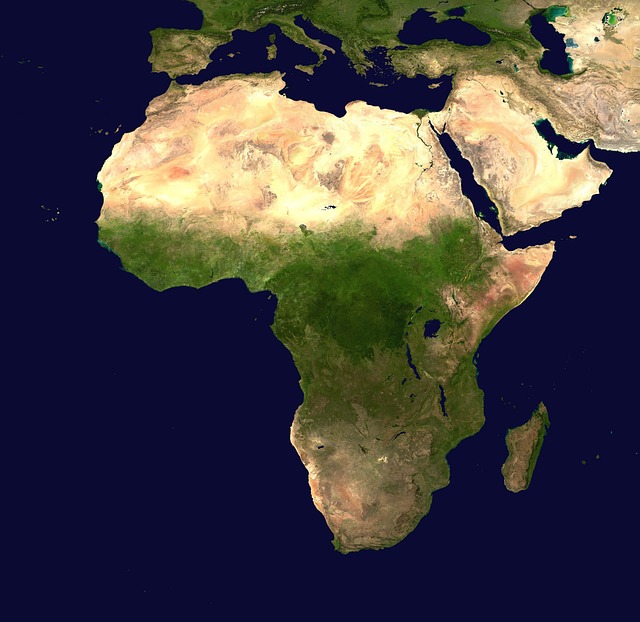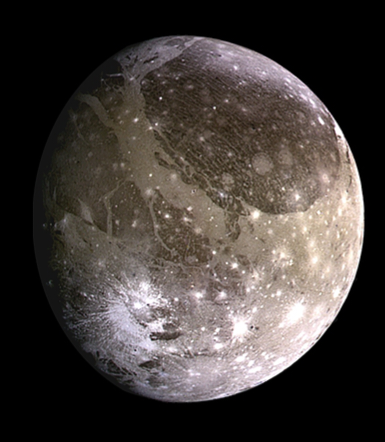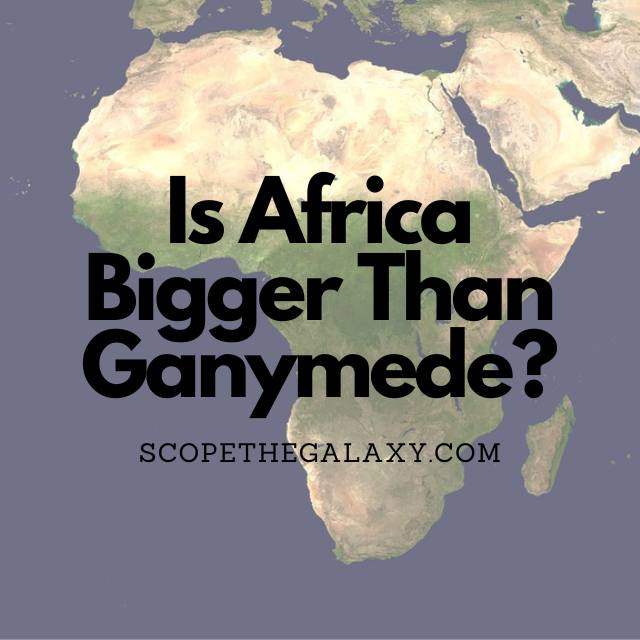*This post may contain affiliate links. This means we may make a commission if you purchase an item using one of our links*
Africa is the 2nd largest continent on Earth, while Ganymede is the largest moon in our Solar System. Ganymede has a surface area of 87.2 million sq. km while Africa is far lesser at 30.3 million sq. km. In regards to volume Africa’s is 1.21 billion cubic km whereas Ganymede’s volume is 76.6 billion cubic km.
The numbers discussed definetly outline which one of the two is bigger but, if you’re seeking a more thtough look at what makes both bodies as large as they are, continue reading as it will be covered in more depth below.
How Big Is Africa?

Africa is the Earth’s second largest continent covering a total area of approximately 30.3 million square kilometers, equal to about 20% of Earth’s total land mass or 6% of the planet’s surface area. Africa possesses the world’s largest desert, plus it has the longest river of any continent, the Nile.
Africa is the second highest popululated continent on Earth. The continent has 54 countries, including Egypt, Nigeria, and Kenya, and it accounts for roughly 17% of the world’s population, with more than 1.4 billion people.
There are eight main physical regions of Africa: the Sahara, the savanna, the rainforest, the Great Lakes, the Sahel, the Ethiopian Highlands, the Swahili Coast, and southern Africa. The Sahara Desert extends over the northern third of Africa and is one of the most inhospitable places on Earth. Its size is 9.2 million square kilometers – roughly the same size as the entire United States.
The African savannah is a vast grassland that covers most of the African continent (around 65%). It extends from the Red Sea at the east to the Atlantic Ocean in the west and from Senegal in the north to Sudan in the south.
A savannah is a type of landscape that consists of grasslands with few trees, bushes, or shrubs. The grasses are typically short but can grow up to almost four meters tall. The dominant vegetation is acacia and baobab trees, which provide shade and shelter for animals during daytime hours.
Africa possesses some of the world’s highest mountains; Mount Kilimanjaro is the tallest, which rises 19,341 feet from its base near the equator to its peak in Tanzania. Africa extends to a length of 8,000km between its northern and southern extremities in Tunisia and South Africa; its width of 7,400km stretches from Xaafuun Point in Somalia to Almadi Point in Senegal.
The thickness of Earth’s crust ranges from 5 to 70km and is generally thicker under continental land where it averages 40km. Taking this figure and multiplying it by Africa’s surface area, we can calculate the rough volume of the continent at 1.21 billion cubic kilometers. This might sound like a sizable volume, but it’s no match for the over 87 billion cubic kilometers of Ganymede volume.
How Big Is The Moon Ganymede?

Ganymede is the largest moon of Jupiter and the largest object in our solar system not to be properly classified as a planet. It is the only moon with a magnetic field of its own, and one of the few bodies in our solar system known to possess a magnetosphere.
Ganymede has a diameter of 5,262 km and a surface area of 87,200,000 sq. km. Its diameter is a good bit smaller than Africa’s, but its surface area is far vaster because the moon is spherical rather than flat. This gives it an impressive volume of 76,600,000,000 cubic km.
This moon is a source of fascination for scientists, with Hubble observations suggesting it may possess an underground ocean. Potentially, this ocean could contain more water than all the water on Earth combined with a depth of up to 100 km – ten times deeper than the oceans on Earth. This ocean is buried beneath a 150 km ice crust.
The terrain of Ganymede falls into two distinct categories: large, bright ridged regions and older, darker ground. This terrain pattern suggests the moon could have been under significant tension from global tectonic processes.
Galileo Galilei first discovered the moon in January 1610; significant because it was the first time scientists observed an object orbiting a planet other than Earth. And this helped us recognize that the Sun lies at the center of our Universe rather than the Earth.
Ganymede formed from leftover gas and dust that remained after Jupiter’s formation, which means that it is roughly the same age as our solar system – 4.5 billion years old.
Three main layers comprise Ganymede; a metallic core, a surrounding mantle of rock, and a top layer of ice. Computer models simulating Ganymede’s makeup show that more ice and oceans could be sandwiched between these main layers. The Hubble Space Telescope also discovered that the moon might have a thin atmosphere of oxygen.
Ganymede is the seventh moon from Jupiter, which orbits at around 1.070 million kilometers away from its planet. This means that Ganymede takes roughly seven Earth days to orbit its planet. While Ganymede is vast – larger than the planet Mercury – it only possesses half the mass of our closest planet to the Sun, classifying it as a low-density object.
Summary
Ultimately, Africa being a practically flat plane whilst Ganymede is spherical and also the largest moon in our solar system means that it’s almost guarenteed to be the larger entity, whether it be in regards to surface area and definetly when it comes to volume.
The only area in which Africa can be regarded larger than Ganymede would be in its north south diameter which stretches 7,400km, just 2,000km more than Ganymede’s

